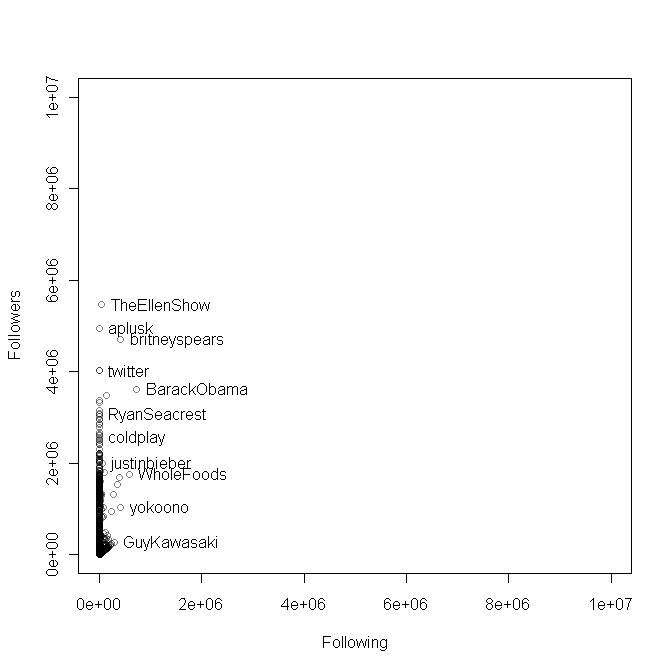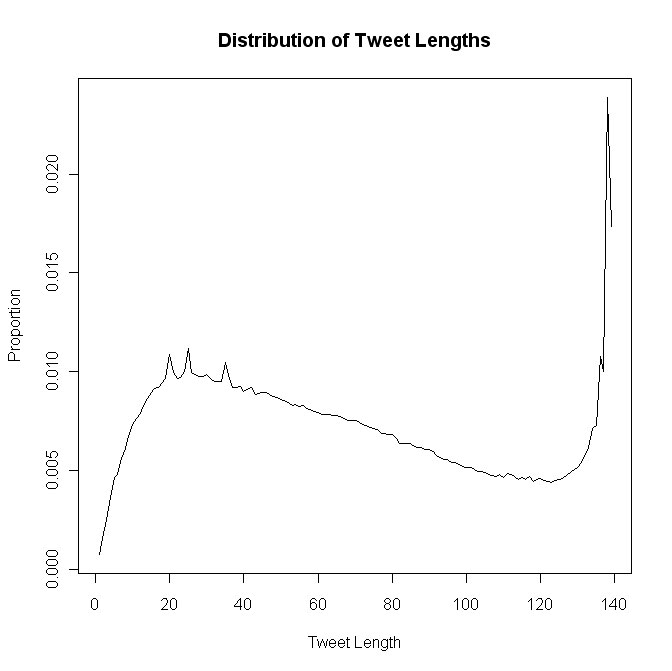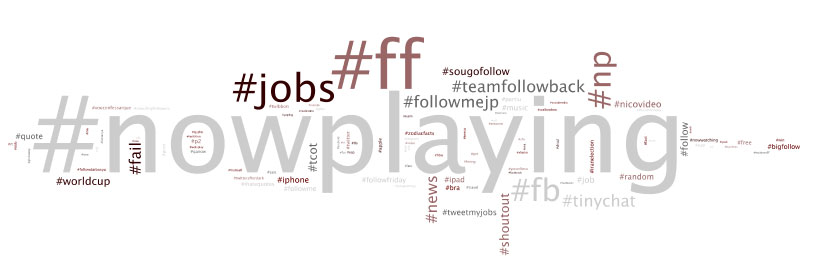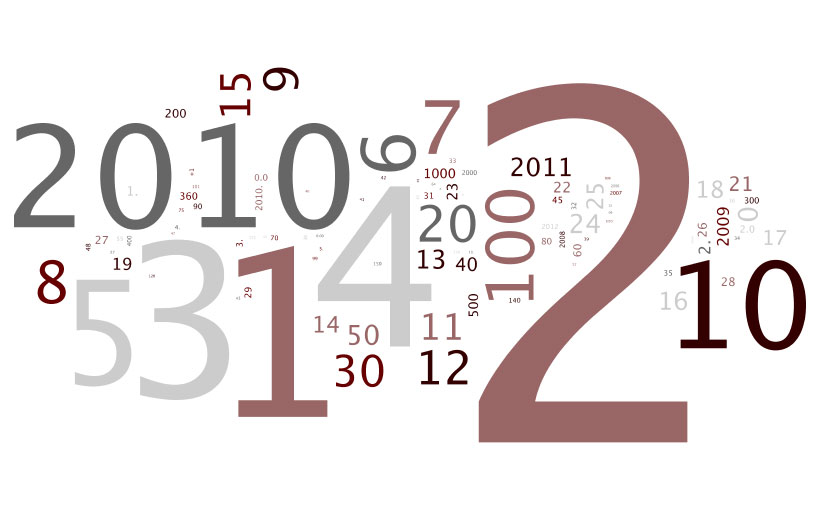Time-Based Profiling
Before any of this will make sense, I ask you to imagine doing a survey of your local shopping mall or other busy commercial shopping district. You want to know where people congregate, where they spend most of their time. Is it in a particular shop, in the food court, or in some dark corner of the parking garage?
There are a few ways of solving this problem:
- You could have a video capture of the entire complex, digitize that data and map where everyone is. Aggregate over a representative time interval (days? weeks?) and you will have a good idea where people hang out. The downside of this approach is that it requires an expensive and complex camera system, and generates a massive amount of data.
- Another approach would be to do this with a series of still cameras that cover the entire mall. Take a snapshot at period intervals. A bit less expensive, but still requires “getting everyone in the frame”.
- Yet another approach is to sample both by time and by location. So don’t install cameras all over the mall. Have one hand-held camera, and take a picture in the book store one minute, another picture in the food court another minute, etc. Aim for coverage over time and locations. And repeat, repeat, repeat. Take thousands of samples. This is low tech on the data capture side, but can still generate massive amounts of data.
So three approaches. Obviously some approaches are easier to implement for the owner of the mall. But only the last one is doable by the average citizen.
This is essentially the situation we find ourselves in with Twitter. They do have APIs that can be used to query their user data. But it is all “rate-limited”, meaning only a certain number of requests can be made per IP address per day. So it is impossible to get a running stream of all activity (a “video”) or even a snapshot of all activity at a single time (a “still camera”). But what we can do is access the “Twitter Public Timeline“, which will give you the most recent 20 tweets. This can be queried every 60 seconds, up to your daily limit.
I’ve been capturing the Twitter Public Timeline since late 2009. I have now nearly 6 million records, each one containing the message, of course, but also the name of the user and their “Followers” and “Following” count at that point in time. I started doing scatter plots of this data and was amazed at the detailed structure evident in the data, that illustrate some interesting ways in which Twitter is being used. No single graph can show it all, so I’m giving you a series of charts, each one showing an area of the Following/Followers phase space 10x larger.
All charts here were done using the open source R environment.
One Thousand Followers
In this chart each pixel represents one Twitter user, plotted at a position reflecting how many people they are Following, and how many Followers they in turn have. This chart is zoomed in to show only those whose Following/Follower counts are 1000 or fewer.
We see a few trends here. First, there is a predominance of users with counts less than 300 or so. But we also see a strong trend toward parity in counts. That is the line going up to the right at 45 degrees. This would be expected for socially-interacting groups of mutual followers.
What I did not expect were the “spikes” for users who follow 100, 200 and 300 accounts. This is not an aliasing artifact of the graphing. This is real. Is there something out there that would lead large numbers of users to follow exactly 100, 200 or 300 users?
(For those of you interested in how the chart was created, I used alpha blending to deal with the “overplotting” problem. So each point is plotted in a partially transparent way, so an area gets darker the greater the density of points. If I didn’t do that, the entire chart would be one giant blot of black, with no discernible patterns. I also introduced random “jitter” between -0.5 and 0.5 to avoid false patterns caused by integer quantization interacting with screen resolution.)
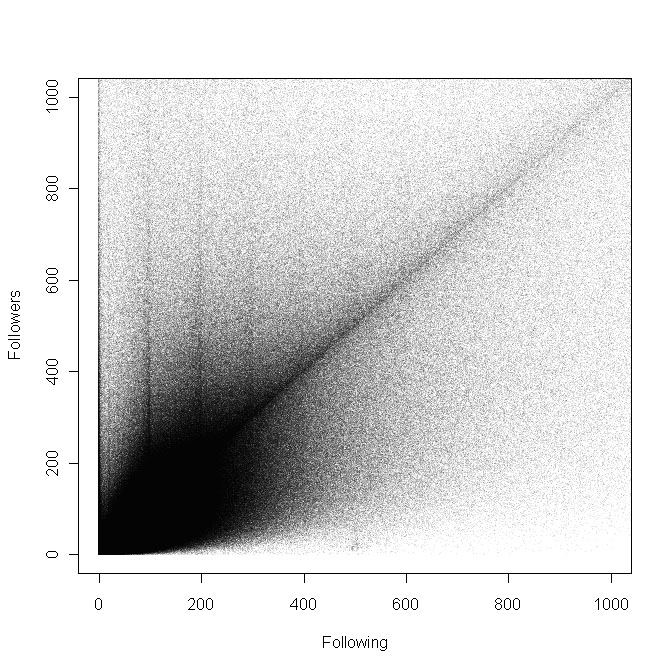
Ten Thousand Followers
Moving out a factor of ten, we now look at those users who have 10,000 or fewer followers. Again, each pixel represents one sampled user. The entire previous chart would fit in to the lower left corner.
The salient feature here is the hard cut-off at 2000. This is due to Twitter’s “aggressive following” limitation: “Once you’ve followed 2000 users, there are limits to the number of additional users you can follow: this limit is different for every user and is based on your ratio of followers to following.” They are a bit coy about what exactly the rule is, but a look at the chart certainly suggests that having a Following/Followers ratio > 1 is going to be a problem.
We also see an unexplained density of people Following exactly 1000 users.
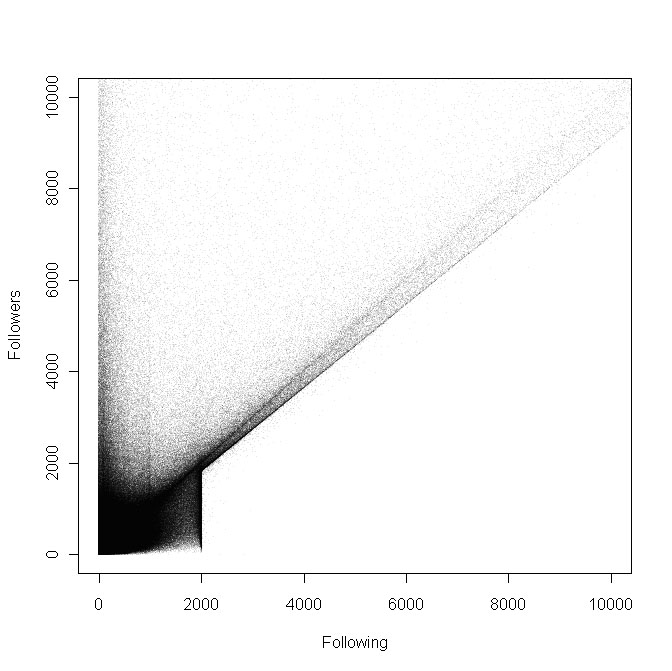
One Hundred Thousand Followers
Another factor of 10 and we switch to a different presentation, representing users with small circles rather than pixels. We’re now starting to see recognizable users and information sources. I’m illustrating some account names at random. Maybe not exactly celebrities, but there are some broadly followed users here. Since the only way to follow 100,000 users is to have close to that number already following you, the lower right half of the chart is empty, and will remain so as we continue to zoom out.
The structure here seems to be:
- Information pushers who follow nearly no one, up the y-axis on the left.
- Users who follow almost everyone who follows them, running diagonally
- Nothing much in the middle
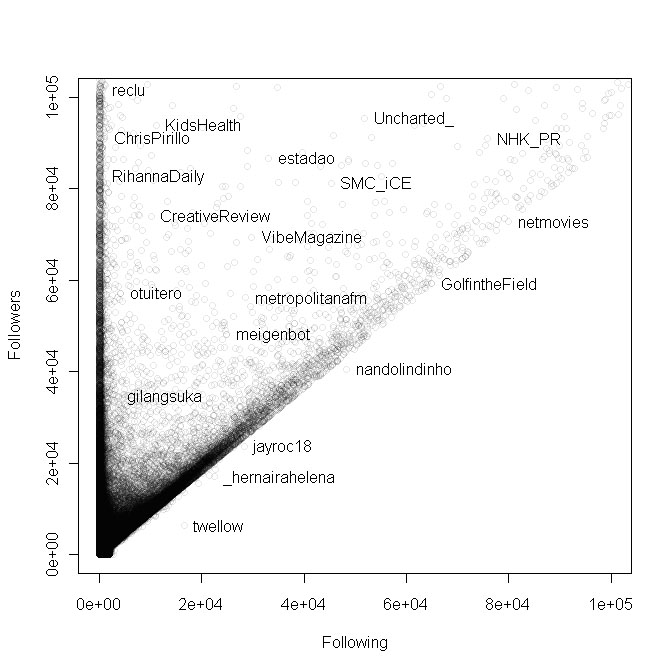
One Million Followers
Zooming out another factor of 10, and we see that the Following count trails off. Does Twitter have another limit here? Or do people realize that it is pointless to follow 500,000 people? But why wouldn’t they also see that it is senseless to follow 50,000 people?
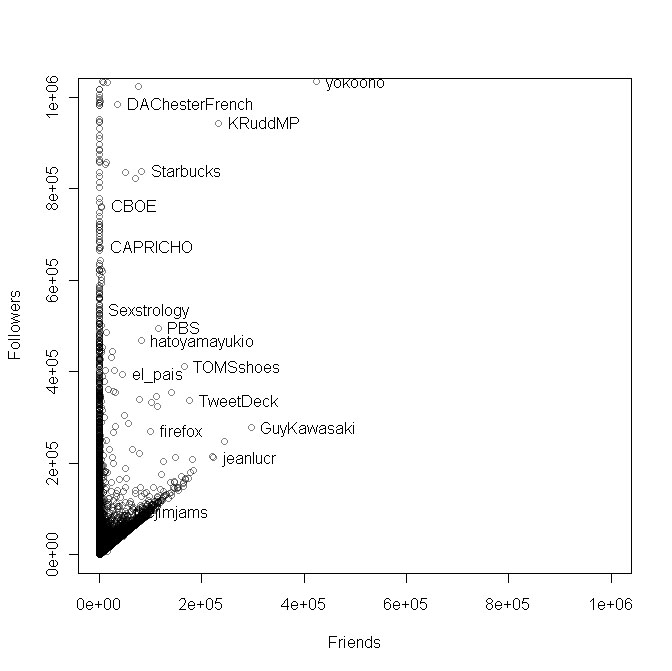
Ten Million Followers
And in the last chart we take it out one more order of magnitude, and the Twitterverse recedes to be Ellen DeGeneres, Britney Spears, Barack Obama, Justin Bieber and Ashton Kutcher. If you are an average Twitter user, like me, everyone you know and actually interact with on Twitter is represented by 1/20th of a pixel in the lower left corner of the chart.
Note that this chart (and the previous) one does not reflect the current Follower/Following count for these particular users. This is not a concurrent snapshot. This was all sampled over an 18 month period of time. Different users are necessarily shown according to their status at different dates. The point is to show the structure of the data, not make a claim that, e.g., Ellen DeGeneres has more followers than Justin Bieber.
